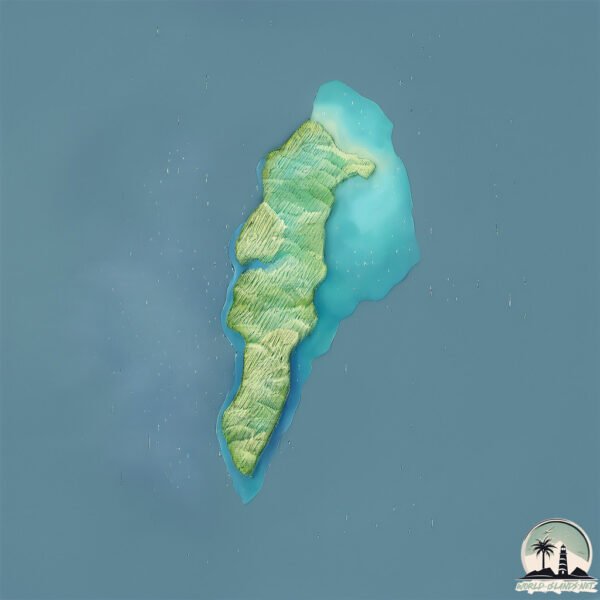Welcome to Isla de San Andrés , a Tropical island in the Caribbean Sea, part of the majestic Atlantic Ocean. This guide offers a comprehensive overview of what makes Isla de San Andrés unique – from its geography and climate to its population, infrastructure, and beyond. Dive into the details:
Geography and size of Isla de San Andrés
Size: 27.6 km²Coastline: 36.1 kmOcean: Atlantic OceanSea: Caribbean SeaContinent: North America
Isla de San Andrés is a Medium Island spanning 28 km² with a coastline of 36 km.
Archipel: –
Tectonic Plate: Africa – One of the world’s largest tectonic plates, covering the African continent and parts of the surrounding oceans, known for its stability with some active rift zones.
The geographic heart of the island is pinpointed at these coordinates:
Climate and weather of Isla de San Andrés
Climate Zone: TropicalClimate Details: Tropical Monsoon ClimateTemperature: Hot
Climate Characteristics: Characterized by heavy rainfall, high humidity, and uniformly high temperatures, but with a distinct short dry season. It features a seasonal reversal of prevailing wind directions.
Topography and nature of Isla de San Andrés
Timezone: UTC-05:00Timezone places: America/New_YorkMax. Elevation: 61 m Mean Elevation: 19 mVegetation: Evergreen Broadleaf ForestTree Coverage: 66%
The mean elevation is 19 m. The highest elevation on the island reaches approximately 61 meters above sea level. The island is characterized by Plains: Flat, low-lying lands characterized by a maximum elevation of up to 200 meters. On islands, plains are typically coastal lowlands or central flat areas.
Dominating Vegetation: Evergreen Broadleaf Forest
Vegetation: 11 vegetation zones – Exceptionally Diverse Island
Infrastructure and Travelling to Isla de San Andrés
Does the island have a public airport? yes .
Does the island have a major port? no .
The mean population of Isla de San Andrés is 3573 per km². Isla de San Andrés is Densely Populated. The island belongs to Colombia .
Continuing your journey, Isla de Providencia is the next notable island, situated merely km away.
Top 10 Best Things to Do in San Andres, Colombia [San Andres Travel Guide 2024]
Are you planning a trip to the beautiful island of San Andres? Look no further! In this video, we will uncover the best things to do in ...
Top 10 Best Things to Do in San Andres, Colombia [San Andres Travel Guide 2024]
Are you planning a trip to the beautiful island of San Andres? Look no ...
Are you planning a trip to the beautiful island of San Andres? Look no further! In this video, we will uncover the best things to do in ...
SAN ANDRES, COLOMBIA Travel Guide - 10 Things To Do
Top 5 Things to Do in San Andrés, Colombia | 4K 2024 Travel Guide
Are you looking for your next paradise beach getaway? Are you looking ...
Are you looking for your next paradise beach getaway? Are you looking to get to somewhere off the beaten path? Do you love ...
Colombia is classified as Developing region: Regions characterized by lower income levels, with economies in the process of industrialization and modernization. The level of income is Upper middle income.
News – Latest Updates and Headlines from Isla de San Andrés
Stay informed with the most recent news and important headlines from Isla de San Andrés. Here’s a roundup of the latest developments.
Loading...
Please note: The data used here has been primarily extracted from satellite readings. Deviations from exact values may occur, particularly regarding the height of elevations and population density. Land area and coastline measurements refer to average values at mean high tide.

